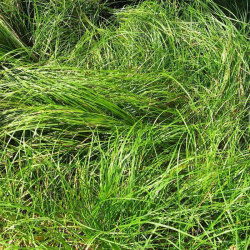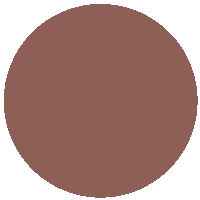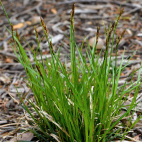Color
Availability
USDA Zone
Region
Type
Duration
Season
Germination
Soil
Sunlight
Height
Narrow Your Search
Color
Availability
USDA Zone
Region
Type
Duration
Season
Germination
Soil
Sunlight
Height
US Native Grass Seeds
The species on this page are not all technically classified as grasses, but the average gardener would probably call them "grass". Here you will find a variety of seeds of native grasses, sedges, reeds, and rushes. You might not think of grass as being as beautiful as flowers, but some of these wild grasses really are beautiful in their own way. Many of the native prairie grasses turn color in autumn, and the rusty bronze color of the stems adds a real fall aura to the planting. Winter birds benefit from the wild grass seeds, and small animals use the thick undergrowth for cover. The biomass of the grass is also the primary source for fuel when a prairie planting undergoes a planned burn.
-
 Out Of Stock
Common Oak Sedge Seeds
Carex pensylvanica
This miniature sedge is often sought for woodland plantings where a short native grassy plant is desired. Pennsylvania sedge seeds are very difficult to harvest, so they are typically either very expensive or simply not available. Finding a natural stand of this sedge in the woods is a rare and beautiful thing.Quick Viewx
Out Of Stock
Common Oak Sedge Seeds
Carex pensylvanica
This miniature sedge is often sought for woodland plantings where a short native grassy plant is desired. Pennsylvania sedge seeds are very difficult to harvest, so they are typically either very expensive or simply not available. Finding a natural stand of this sedge in the woods is a rare and beautiful thing.Quick ViewxCommon Oak Sedge Seeds
Carex pensylvanica
This miniature sedge is often sought for woodland plantings where a short native grassy plant is desired. Pennsylvania sedge seeds are very difficult to harvest, so they are typically either very expensive or simply not available. Finding a natural stand of this sedge in the woods is a rare and beautiful thing.
$3.96 Pkt - $400.00 / Oz
The species on this page are not all technically classified as grasses, but the average gardener would probably call them "grass". Here you will find a variety of seeds of native grasses, sedges, reeds, and rushes. You might not think of grass as being as beautiful as flowers, but some of these wild grasses really are beautiful in their own way. Many of the native prairie grasses turn color in autumn, and the rusty bronze color of the stems adds a real fall aura to the planting. Winter birds benefit from the wild grass seeds, and small animals use the thick undergrowth for cover. The biomass of the grass is also the primary source for fuel when a prairie planting undergoes a planned burn.




